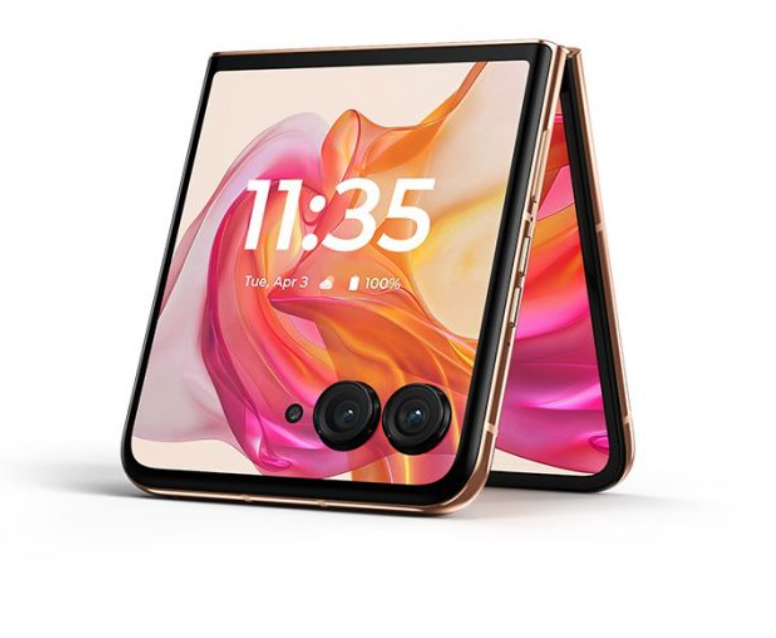Motorola is the only brand among foldable phone manufacturers that has yet to launch a book-style or horizontally foldable phone. So far, the brand has launched multiple generations of Razr-branded flip-style foldables, capturing the nostalgia and attention of users who fondly remember the original Razr phones. While the Razr has its own charm, it’s high time Motorola considered expanding its foldable horizons with a book-style foldable phone. Here’s a wishlist of features and design elements that could make a Motorola book-style foldable a true contender in the market:

1. Durable and Reliable Hinge
The hinge is the heart of any foldable phone, and Motorola needs to nail it. A robust hinge mechanism that ensures smooth opening and closing while being durable enough to withstand thousands of folds is crucial. Ideally, it should offer multiple viewing angles for enhanced versatility, allowing users to prop the phone up for hands-free video calls or watching content. Taking inspiration from the “Flex Mode” hinge on Samsung’s foldables would be a good starting point.
2. Large and Immersive Main Display
A book-style foldable thrives on its expansive main display. Motorola should aim for a screen size of at least 7.6 inches, with minimal bezels and a high refresh rate for smooth visuals. An AMOLED panel with vibrant colors and deep blacks would further enhance the viewing experience. Support for HDR10+ and Dolby Vision would be the cherries on top, delivering stunning visuals for movies and games.
3. Functional Cover Display
Unlike the clamshell design, a book-style foldable offers the advantage of a cover display. This secondary screen should be large enough to provide meaningful functionality, allowing users to check notifications, control music playback, and even reply to messages without unfolding the phone. A panel size of around 6.2 inches would strike a good balance between usability and compactness.
4. Powerful Performance
No foldable phone is complete without flagship-level performance. Motorola should equip its book-style foldable with the latest Snapdragon 8 series processor, paired with ample RAM and storage. This would ensure smooth multitasking, lag-free gaming, and a seamless user experience across the board.
5. Versatile Camera System
Motorola has a history of delivering capable camera systems, and its book-style foldable should be no exception. A triple-camera setup with a high-resolution primary sensor, an ultra-wide lens, and a telephoto lens would cater to a wide range of photography needs. Strong low-light performance and advanced image processing capabilities would further elevate the camera experience.
6. Long-Lasting Battery Life
Foldable phones demand more power due to their larger displays and complex hinge mechanisms. Motorola should prioritize battery life by incorporating a sizable battery, ideally around 5000mAh. Support for fast charging and wireless charging would add to the convenience.
7. Clean Software Experience
Motorola has always been known for its clean and intuitive software experience. The brand should build upon its near-stock Android approach, optimizing it for the unique form factor of a book-style foldable. Features like split-screen multitasking, drag-and-drop functionality, and app continuity should be seamlessly integrated to enhance productivity and user experience.
8. Stylus Support
The Motorola Edge+ 2023 came with support for a stylus, although it lacked a dedicated storage slot for the accessory. To address this, Motorola offered a stylus + folio bundle, allowing users to store the stylus alongside their device. Currently, stylus support is limited among foldable phones, with Samsung being the only major brand to offer this feature. The idea of incorporating stylus support into a potential Motorola horizontally foldable phone is particularly exciting.
With its expansive internal display, a foldable device could offer an enhanced and versatile experience for productivity, creative tasks, and more. Motorola could potentially adopt the same strategy as the Edge+ and provide a stylus and folio bundle, which would provide users with a convenient way to store and carry the stylus, thereby complementing the device’s unique form factor.
9. Touch of Motorola’s Design DNA
While foldable phones are inherently premium devices, competitive pricing is crucial for mass adoption. Motorola should aim to position its book-style foldable strategically, offering a compelling value proposition compared to its rivals.
10. Competitive Pricing
Motorola should infuse its book-style foldable with its signature design elements, such as the iconic “batwing” logo and a sleek, minimalist aesthetic. A focus on premium materials and build quality would further enhance the phone’s appeal.
11. Catchy Name
While most foldable phones follow a clear naming convention with the word “Fold” included, such as the Samsung Galaxy Z Fold 6, Google Pixel 9 Pro Fold, Xiaomi Mix Fold 4, and Vivo X Fold 3 Pro, some brands have chosen more unique monikers for their foldable devices. OnePlus, for example, named its foldable the OnePlus Open, while Oppo’s foldable is called the Oppo Find N3, and Honor opted for the Honor Magic V3. These names break away from the typical foldable convention and offer a fresh branding identity.
In contrast, Motorola has consistently used the Razr name for its flip-style foldables. If the brand ventures into the book-style foldable market, it could continue to leverage the Razr branding to maintain its identity and recognition. r. Here are a few potential names that build upon the Razr legacy: Motorola Razr Fold, Razr Unfold, Razr Expand, and Razr Note.








Comments